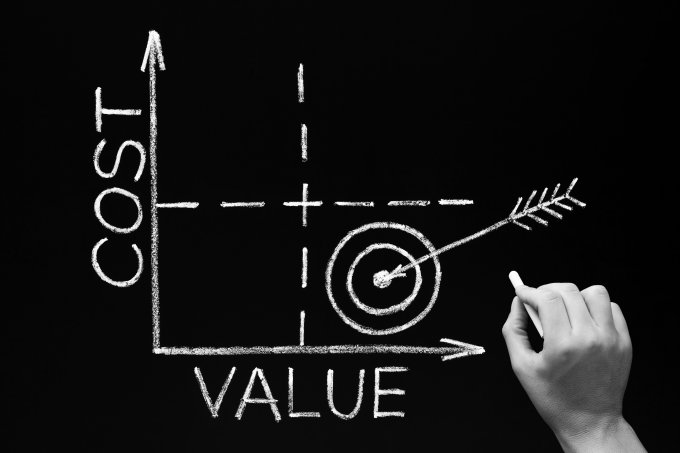Why your SaaS Business Should Pay More Attention to Customer Lifetime Value (CLV)
Maximize revenue from your SaaS customer base
When your business relies on subscriptions to thrive, your customer base is your most valuable asset. Therefore, finding the right balance between resources spent on customer acquisition and your return on existing customers is crucial. A potential imbalance towards a significantly higher acquisition share might cause churn, revenue drops, or lower overall spending per customer.

The Customer Lifetime Value (CLV) is often overlooked, even though it’s one of the most important metrics to measure SaaS growth. CLV gives a prediction of the revenue made from a client over the duration of the relationship with your company.
CLV is a powerful metric to assess your SaaS health and determine where to focus your sales efforts. In this article, we explain why the Customer Lifetime Value is a key metric for your SaaS business, along with tips to increase your profit per customer.
Why is CLV so important for SaaS businesses?
Many SaaS businesses fail because they lose customers faster than they can win new ones. These organizations often put focus on customer acquisition over customer retention and loyalty. While this strategy might succeed in other industries, in SaaS that is a risky play on mid-to long term financial sight.
Retaining and maximizing the revenue from existing customers is not only a critical growth enabler, it also keeps the organization balanced. Keeping and developing your existing customer base requires less efforts than hunting and onboarding new customers. Customer retention can make or break your business: the longer you keep your customers, the more value you get from the relationship. A high retention rate also indicates that people find the added value of your solution, and each prosperous relationship is a potential multiplier for further expanding your customer base.
As a SaaS business, you want to increase the revenue of your existing customer base. That’s where the CLV comes into play. In a nutshell, the Customer Lifetime Value is an estimate of how much money a client will spend with you during the relationship with your company.
Knowing your CLV will help drive decisions about sales, marketing, and product development. It helps understand how profitable a particular customer segment (or industry) is, and indicates numerous key insights such as:
-
How healthy is your customer base?
-
Direct trusted and ongoing market feedback
-
Solid growth estimates for the future
-
How good is your relationship with existing customers?
-
What are the acceptable customer acquisition costs?
How to increase Customer Lifetime Value?
Understanding the importance of the CLV and the correlated metrics makes it easy to deduce how to maximize this value. There are two major ways to maximize your CLV:
-
Increase the length of the relationship with customers
-
Increase the profit you make from each customer
Manage expectations during the sales process
Great SaaS businesses are built around their customers' needs and customers’ experiences. So start with the customer needs and create a great customer experience from the very beginning, with a clear and structured customer journey in mind.
Sell what you can deliver. Don’t commit to what you can’t deliver. Don’t oversell to close a customer. You will pay later for that. Don’t follow old-school rules like “ABC - always be closing”. Win a customer when you can create a mutual benefit. Then you manage your customers' expectations from the first touchpoint in the customer journey.
How long do you stay a customer if you got over-sold?
How happy are you as a customer if you get exactly what you expected, and even more?
Optimize onboarding
You did very well, and you have won a new customer. Now it is time to onboard the customer. Customer onboarding starts from the very moment a user interacts with your software for the first time, or when you win a new client.
If your software is not adopted in the first weeks of use, chances are the customer will eventually unsubscribe from your solution. It’s essential to identify potential challenges and carry your customer to achieve their first success with your product. Guide them along the learning curve and make sure they are not struggling along the way.
Down the line, efficient user onboarding will also save you time and money on customer support and decrease the cost of deployment of your solution.
Track user engagement
Keeping an eye on product usage is crucial to boosting customer retention. Analyzing user behavior will help you identify users that need help, that are about to churn, or that are ready for an upsell. Monitor and observe how end-users interact with your solution to detect patterns and discover how to better support your customers.
There are 3 examples of KPIs to track how users interact with your solution, this might differ depending on your software:
-
How often do they use your product? → Daily/Weekly/ Monthly Active Users
-
How long do they use it for? → Time In-App
-
What features exactly do they use? → Feature Usage
Identifying heavily used features may also help improve your value-oriented sales pitch and enhance product development.
Provide impeccable customer services
Building a long-lasting relationship with clients involves providing exceptional customer support. Nothing should prevent your customers from using your product. If they’re having a hard time finding answers and solutions to use your software, they will eventually give up trying.
Today, customer support must be omnichannel to suit all types of users: they should be able to contact you through different channels such as email, social media, in-app, live chats, and so on.
Invest in a solid knowledge base, including video content, to explain your product features to complement your in-person support services and to give tutorials or how-to guides on your solution. For key accounts, consider offering premium support with a dedicated team.
Expand your customers' share of wallet
Another way to improve your Customer Lifetime Value is to grow the revenue you get from your customers through additional sales. Customer expansion can be achieved through:
-
Upgrading customers to higher-priced plans
-
Cross-selling complementary products
-
Offering add-ons that enhance your base product
Your customer success and support teams should be trained to identify additional sales opportunities. Make it a habit in your organization to detect and hand over additional sales opportunities to the right internal contact.
Keep in mind that any up or cross-sell as such should always be value-driven and originate from a real customer need.
Final words about the Customer Lifetime Value
Whether you are a startup or a well-established software company, working towards maximizing Customer Lifetime Value is key for the success of your business. Structure your business aiming at a higher CLV and lower Customer Acquisition Cost (CAC) to maximize growth.
If you need guidance improving these two metrics, book a short meeting with our team!

With his vast experience in the sales and Inside Sales industry, Julien is globally acquiring new customers and winning projects for Salescode. Mostly engaging in high headcount project bids, he is the first wave of expertise, when working with Salescode. Knowing all global markets he is our go-to-professional for strategy and structure to generate value for our clients.
Click here to connect with Julien on LinkedIn.



